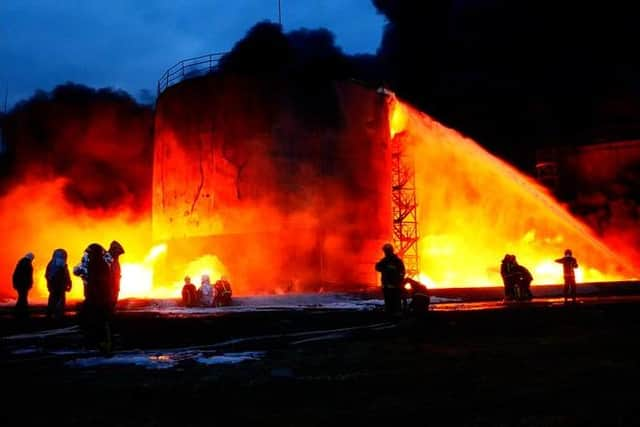War against Ukraine: Environment is ‘silent victim’ of Russian invasion
Official figures show more than 7,000 civilians have died and around 12,00 have been injured since the war began on 24 February 2022.
Now a new interactive map reveals the dreadful scale of nature destruction after 12 months of the conflict, based on more than 900 cases which have been reported since the attack started.
Advertisement
Hide AdAdvertisement
Hide AdLandscapes, rivers, seas and air have been impacted by the hostilities, with extensive damage resulting from wildfires caused by missile strikes, toxic gases from explosions and pollution of soil and water from fragments of shells.
Information gathered over the past year suggests 1.24 million hectares of nature reserve territory and three million hectares of woodlands in Ukraine have been affected by the war, with 450,000 hectares of forests under occupation or in combat zones.
According to international environmental groups working to help rebuild the war-ravaged country, the mapping illustrates the devastating effects Russia's invasion is having on nature as well as people.
“We have all seen the devastating human suffering caused by this war, but the environmental damage can be less obvious,” said Denys Tsutsaiev, a campaigner with Greenpeace Central and Eastern Europe in Kyiv.
Yevheniia Zasiadko, a spokesperson for the Ukrainian group Ecoaction, said: “War affects our nature just as badly as our people and our infrastructure.


“However, this damage remains unseen and mostly ignored, for the environment is the silent victim.
“We want to be its voice so everyone is aware of the environmental consequences of the Russian war and so the restoration of nature is included in Ukraine’s recovery plans.”
Rockets and artillery are one of the most common causes of destruction, creating a cocktail of chemical compounds that oxidise when they explode and are released into the atmosphere.
Advertisement
Hide AdAdvertisement
Hide AdThe main ones – carbon dioxide and water vapour – are not toxic but contribute to climate change. Sulphur and nitrogen oxides cause acid rain, which can harm humans and other mammals as well as birds, plants and water sources.


Metal fragments of shells are also unsafe for the environment. Ammunition cases often contain sulphur and copper, which can get into the soil and leach into underground waters, eventually penetrating food chains and affecting people and animals.
Ms Zasiadko said: “After the war is over, we will feel the negative impact of the war on the environment for a long time.
“The Ukrainian government promises to rebuild our homeland – and the environment is part of what has to be rebuilt.”
Mr Tsutsaiev added: “Nature recovery is an important part of the discussion about Ukraine's future and it will require tools, expertise and commitment, as well as significant funds.


“Those funds should be allocated already, not when the war is finished.
“It is complicated to map the damage caused by the war in Ukraine: much of the liberated territory is thought to be full of mines and other explosives, while Russian forces still occupy parts of the country, making data collection a challenge in those areas.”
Ecoaction and Greenpeace are calling for nature restoration to run in parallel with the reconstruction of towns in Ukraine.
Comments
Want to join the conversation? Please or to comment on this article.